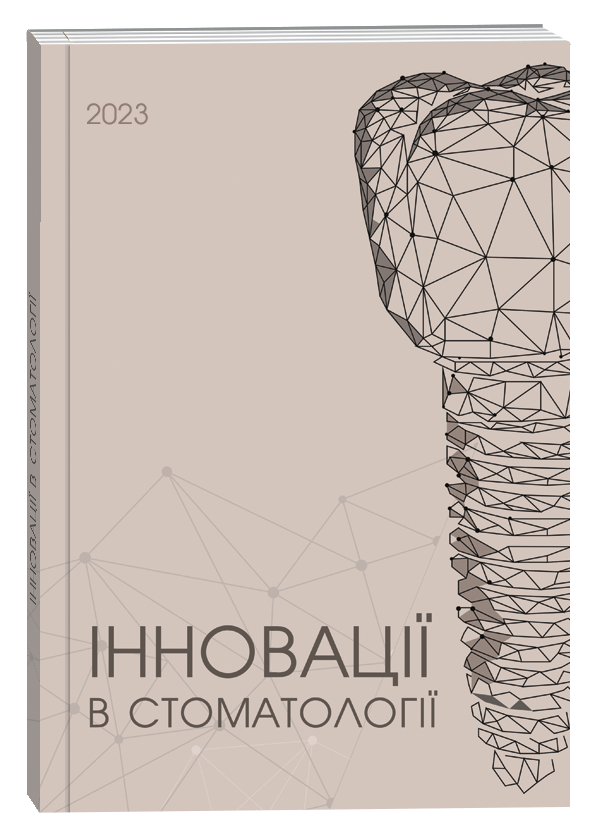FORCED ORTHODONTIC EXTRUSION OF SEVERELY DAMAGED TEETH FOLLOWED BY RESTORATIVE REHABILITATION: A PILOT CLINICAL STUDY
DOI:
https://doi.org/10.35220/2523-420X/2025.2.22Keywords:
biological width, forced orthodontic extrusion, severely damaged teethAbstract
Restoring teeth with significant subgingival decay is challenging to ensure long-term stability and aesthetics.Forced orthodontic extrusion (FOE) is a minimally invasive method that allows you to save a tooth and create conditions for quality restoration. The purpose of the study was to evaluate the survival and success of the front teeth after FOE, followed by restoration with single crowns. The study included 10 patients and 10 teeth. After an average follow-up of 18.4 months, the survival rate was 90%, complications included structural detachment (30%) and recurrence of extrusion (10%).Root resorption, ankylosis or periapical pathologies were not detected. The obtained results indicate the effectiveness of FOE as a reliable method of preserving severely damaged teeth and creating conditions for long-term functional rehabilitation. Purpose of work.Assess the level of survival and success of teeth with serious damage that were restored with the help of FOE, followed by restoration with single crowns. Materials and methods. 12 teeth were selected from 10 patients (6 men, 4 women, aged 41-53 years) who underwent FOE to restore the biological width and ensure fixation of the ferula 2 mm thick before the final restoration. Two teeth were excluded due to the discovery of root cracks before treatment. The remaining 10 teeth (7 central maxillary incisors and 3 lateral incisors) were extruded for 10-21 days followed by a period of immobilization for two months before final rehabilitation. Clinical and radiological assessments were performed 6, 8 and 24 months after treatment. Results. The overall survival rate was 90% after an average follow-up of 18.4 months.One tooth (10%) failed after 18 months due to the loss of the crown, which revealed a root crack.Conclusions. Due to the well-preserved bone structure after extrusion, immediate implantation was successfully performed. The most common complications during extrusion were structural detachment (30%) and relapse (10%). No signs of root resorption, ankylosis or periapical pathology were found.
References
Han, B., Kim, M. (2023). Orthodontic extrusion technique for subgingival fractures. International Dental Journal, 45, 123–130. DOI: 10.1016/j.identj.2023.07.652.
Cordaro, M., Staderini, E., Torsello, F., Grande, N.M., Turch,i M., Cordaro, M. (2021). Orthodontic extrusion vs. surgical extrusion to rehabilitate severely damaged teeth: a literature review. International Journal of Environmental Research and Public Health, 12, 2, 89–102. – DOI: 10.3390/ijerph18189530.
Lanza, A., Di Fede, O., Lo Giudice, G. (2021). Orthodontic extrusion in restorative dentistry: a systematic review. Journal of Prosthodontic Research, 64, 3, 275–285. DOI: 10.18535/jmscr/v4i3.18.
Kaczmarek-Mielęcka, U., Wojtacka, L. (2009). Orthodontic and prosthodontic treatment of subgingival fractures of single-root teeth – a case study. Polish Annals of Medicine, 16, 1, 103–113. – DOI: 10.29089/paom/162203.
Ansar, J. (2015). Aesthetic rehabilitation of subgingival fractures with forced eruption: case reports. Journal of Clinical and Diagnostic Research, 12, 7, 9–15. DOI: 10.7860/jcdr/2015/12187.5900.
Carvalho, P. F., Lanza, A., Tannure, P. N. (2014). Orthodontic extrusion, an alternative to restitute the biologic width to the anterior sector. Journal of Clinical and Experimental Dentistry, 12, 4, S14. DOI: 10.4317/jced.17643808








